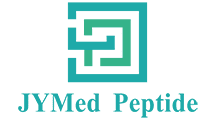I was thinking about cellular senescence the other day, and it occurred to me that cells are arrested all the time, say due to replication errors, or damage from ROS. When this happens there is effectively a battle between catabolism and anabolism – AMPK and FOXO (triggering autophagy)vs. MTOR and P21 (trying to continue growth and degrading mitos further). Unless the former can hold out long enough for DNA repair to be completed the cell will permanently become senescent, and there’s no way back from that (without telomerase or epigenetic reprogramming). So we can immediately see the importance of keeping low MTOR and ROS, and high AMPK, and possibly better DNA repair too. I think this process is happening all the time, with MTOR mainly winning, and it is just the robustness of the youthful immune system that removes this constant loss of functional to senescent cells. With time this changes in favour of senescent cell accumulation, and by the time this causes inflammation to rise too high, we get stem cell and telomere dysfunction too.
Other income (expense), net increased by approximately $0.8 million to $1.4 million in other income, net during the year ended December 31, 2018, from $0.6 million in other expense, net for the year ended December 31, 2017. This increase was due primarily to an $0.8 million increase in interest income.
In addition, in some non-U.S. jurisdictions, the proposed pricing for a drug must be approved before it may be lawfully marketed. The requirements governing drug pricing vary widely from country to country. For example, the EU provides options for its member states to restrict the range of medicinal products for which their national health insurance systems provide reimbursement and to control the prices of medicinal products for human use. A member state may approve a specific price for the medicinal product or it may instead adopt a system of direct or indirect controls on the profitability of the company placing the medicinal product on the market. There can be no assurance that any country that has price controls or reimbursement limitations for pharmaceutical products will allow favorable reimbursement and pricing arrangements for Aramchol or any future product candidates. Historically, products launched in the EU do not follow price structures of the United States and generally tend to be significantly lower.
At the inception of each arrangement that includes precommercial milestone payments, we evaluate whether the milestones are considered probable of being reached and estimates the amount to be included in the transaction price using the most likely amount method. If it is probable that a significant cumulative revenue reversal would not occur, the associated milestone value is included in the transaction price. Milestone payments that are not within our control, such as regulatory approvals, are not considered probable of being achieved until the uncertainty related to the milestone is resolved. The transaction price is then allocated to each performance obligation on a relative selling price basis, for which we recognize revenue as or when the performance obligations under the contract are satisfied. At the end of each subsequent reporting period, we reevaluate the probability of achievement of such development milestones and any related constraint, and if necessary, adjust its estimate of the overall transaction price. Any such adjustments are recorded on a cumulative catch-up basis, which may significantly affect our revenue in the period of adjustment.

FDA-approved drug may also be eligible for patent term extension, which permits patent term restoration as compensation for the patent term lost during the FDA regulatory review process. The Hatch-Waxman Act permits a patent term extension of up to five years beyond the expiration of the patent. The length of the patent term extension is related to the length of time the drug is under regulatory review. Patent term extension cannot extend the remaining term of a patent beyond a total of 14 years from the date of product approval and only one patent applicable to an approved drug may be extended. Similar provisions are available in Europe and other foreign jurisdictions to extend the term of a patent that covers an approved drug. In the future, if and when our products receive FDA approval, we expect to apply for patent term extensions on patents covering those products. We plan to seek patent term extensions to any of our issued patents in any jurisdiction where these are available; however, there is no guarantee that the applicable authorities, including the FDA in the U.S., will agree with our assessment of whether such extensions should be granted, and if granted, the length of such extensions.
Advanced Life Sciences Holdings, Inc. (OTCBB:ADLSD ) is a biopharmaceutical company engaged in the discovery, development and commercialization of novel drugs in the therapeutic areas of infection, cancer and respiratory diseases. The Company’s lead candidate, Restanza, is a novel once-a-day oral antibiotic in late-stage development for the treatment of respiratory tract infections including CABP and biodefense pathogens including anthrax, plague and tularemia.
Pursuant to our Articles, subject to the rights of holders of shares with limited or preferred rights, ordinary shares shall confer upon the holders thereof equal rights to receive dividends and to participate in the distribution of the assets of the Company upon its winding-up, in proportion to the amount paid up or credited as paid up on account of the nominal value of the shares held by them respectively and in respect of which such dividends are being paid or such distribution is being made, without regard to any premium paid in excess of the nominal value, if any.
Our Company, Galmed Pharmaceuticals Ltd., was incorporated in Israel on July 31, 2013 as a privately held company and is governed by the Companies Law. However, our business has been operating since 2000 under a different group of companies established in the same year, or the Group. Originally, we operated under the parent company, GHI. GHI held all of the equity rights in and to GTTI. GTTI held all of the equity rights in and to GIL (other than 0.1% of the share capital held by GHI). GIL held all of the equity rights in and to GMR. Our intellectual property was held by GIL. The research and development was conducted by GMR as a service to GIL on a cost plus basis. GIL was responsible for all product development.

Our management, with the participation of our Chief Executive Officer and Chief Financial Officer, evaluated, as of the end of the period covered by this Annual Report on Form 10-K, the effectiveness of our disclosure controls and procedures (as defined in Rules 13a-15(e) and 15d-15(e) under the Exchange Act). Based on that evaluation, our Chief Executive Officer and Chief Financial Officer concluded that our disclosure controls and procedures were effective at the reasonable assurance level as of December 31, 2018
Cd38−/− mice (B6.129P2-Cd38tm/Lud) were purchased from Jackson Laboratory (Bar Harbor, ME). TRPM2−/− mice were kindly provided by Mori (Kyoto University, Japan). Mice were bred and housed in the facilities of Chonbuk National University Medical School under specific pathogen free conditions. All experimental animals were used under a protocol approved by the institutional animal care and user committee of the Chonbuk National University Medical School (CBU 2014-00031). Standard guidelines for laboratory animal care were performed in accordance with the Guide for the care and use of laboratory animals published by the National Institutes of Health37.
During 2018, 2017 and 2016, the Company recorded salary expenses, stock based compensation expenses and directors’ fee to its related parties in the amount of $3.7 million, $3.4 million and $2.5 million respectively.
In June 2016, FASB issued ASU No. 2016-13, “Financial Instruments – Credit Losses – Measurement of Credit Losses on Financial Instruments”, which introduces a model based on expected losses to estimate credit losses for most financial assets and certain other instruments. In addition, for available-for-sale debt securities with unrealized losses, the losses will be recognized as allowances rather than reductions in the amortized cost of the securities. The ASU is effective for the Company in the first quarter of 2020, with early adoption permitted. The Company is currently evaluating the effect the adoption of this ASU will have on its consolidated financial statements.
Form 10-K Ra Pharmaceuticals, Inc. For: Dec 31 | Trelstar(Triptorelin Pamoate) Related Video:
With our leading technology at the same time as our spirit of innovation,mutual cooperation, benefits and development, we are going to build a prosperous future alongside one another with your esteemed enterprise for C43h67n11o12s2, Cas 196078-30-5, Nafarelin Monoacetate, Based on experienced engineers, all orders for drawing-based or sample-based processing are welcomed. We have won a good reputation for outstanding customer service among our overseas customers. We will continue to try the best to offer you good quality products and the best service. We are looking forward to serving you.







